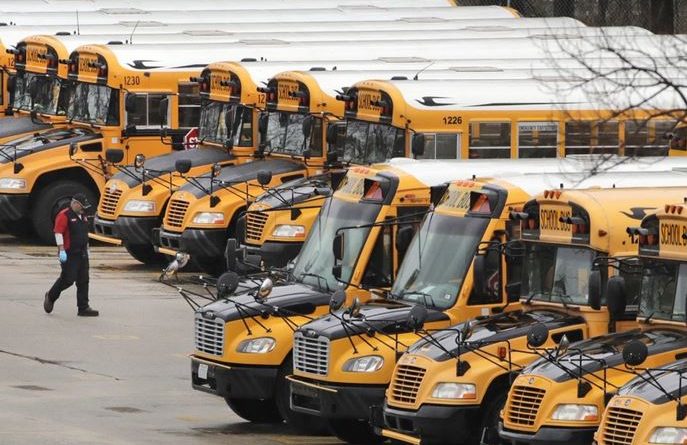Understaffed School District IT Departments Are a Big Problem. Here’s One Way to Solve It
Understaffed district technology departments: The solution to your problems might be closer than you think.
When school went fully remote last year, the Beaverton, Ore., school district discovered a major problem: About 20 percent of its 40,000 students came from primarily Spanish-speaking homes. And the district’s IT support team—which helped students and their parents troubleshoot technology problems— didn’t have nearly enough bilingual personnel.
In fact, during the last months of the 2019-20 school year, the district had just one bilingual technical support staffer actively providing support. “That person did a fantastic job and was completely exhausted,” said Andrew Stenehjem, the manager of user services for the district, which is near Portland.
At the beginning of this school year, when it became clear that virtual learning was going to last longer than anticipated, the district’s tech leadership realized something had to give or they weren’t going to be able to “adequately support Spanish-speaking families. And that was going to be a problem,” Stenehjem said.
The answer? Bus drivers and other support staff.
Stenehjem and his staff put in a call to the district’s Human Resources department, looking for personnel who fit the bill. They needed people who were fluent in both languages and had some technical know-how. “It wasn’t a matter of transportation giving us just anyone who could speak Spanish,” he said.
The IT department ended up getting four staffers who had previously done other work for the district, including two bus drivers. The maintenance, transportation, and other departments also lent out bus drivers and other support staff to help contact families and find out how many needed hotspots for internet connectivity. About ten additional staffers ended up helping with that effort, Stenehjem said.
All of the extra hands were helpful, but Stenehjem and his team really hit the jackpot with Fabian Gomez. Before immigrating to the United States from Argentina more than a decade ago, Gomez had studied engineering. He had planned to continue that type of work in the states, but experienced a language barrier and “culture shock,” he said.
By the time the pandemic hit, Gomez was slowly working toward getting his engineering credentials in the United States. The bus driver gig allowed him time to complete coursework while receiving a living wage and benefits.
Providing technical support for the district turned out to be a better fit, he said. “I love working with students and I love technology and I also understand how difficult it is for students [and families] when they have the language barrier,” Gomez said. He now has a full-time job as a technical support specialist for Beaverton schools and isn’t planning to return to his bus routes.
Staffing IT help desks—whether with bilingual staff or not—has been a challenge for school districts during the pandemic, a recent survey by the Consortium for School Networking found. Sixty-one percent of 400 district leaders surveyed said that their staffing levels were not adequate to offer technical support to families when the pandemic hit.
Beaverton isn’t the only district that decided to take advantage of support staff, said Keith Krueger, the executive director of CoSN, which represents district technology leaders. “When the pandemic hit, there were all kinds of employees—whether it was custodial or kitchen staff—re-engineered into other tasks.”
He’s heard anecdotally that many support workers were deployed to IT departments, although not necessarily to offer bilingual technical support. “The technology department was overwhelmed with need and meanwhile there were people on payroll who couldn’t do their regular [tasks],” he said.
Districts’ technical personnel were already stretched thin before the pandemic, Krueger added. And, unfortunately, he predicts the problem is likely to worsen.
“There’s been a lot of new money poured into tech,” he said. But it’s been primarily for devices and home internet, even though districts are providing new types of support to families, including at-home technical help, he said.
“What we’ve seen every year is the number of devices that districts are managing keeps increasing. The number of applications keeps increasing. The number of things that the network runs keeps increasing,” Krueger said. Districts now rely on their IT teams to oversee systems that run everything from the HVAC system to doors and locks, he explained.
While policymakers are willing to pony-up for new Chromebooks or hotspots, they are less likely to be jazzed about funding new personnel, and with it, the ongoing expense of salaries and benefits.
“Technical support staff have a lot more to do,” Krueger said. It is important they get the staff they need, he added. “Having new things coming on the network and not having it safe and secure and working is a recipe for disaster.”
Source: https://www.edweek.org/leadership/understaffed-school-district-it-departments-are-a-big-problem-heres-one-way-to-solve-it/2021/06




